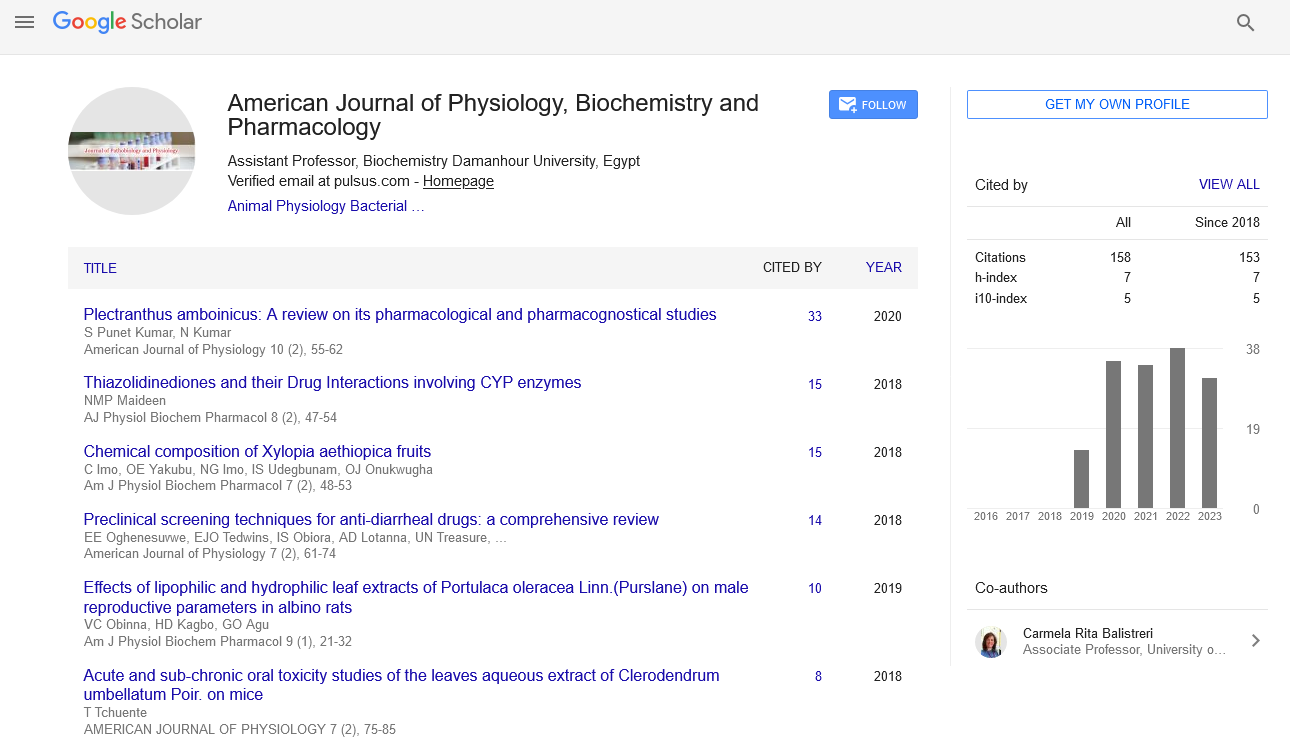Perspective - American Journal of Physiology, Biochemistry and Pharmacology (2022)
Note on Treatment of Cardiac Tumors
Hasan Gill*Hasan Gill, Department of Botany, University of Benin, Benin, Nigeria, Email: gill.hasan@mail.ub.edu.ng
Received: 01-Feb-2022, Manuscript No. AJPBP-22-55620; Editor assigned: 03-Feb-2022, Pre QC No. AJPBP-22-55620 (PQ); Reviewed: 17-Feb-2022, QC No. AJPBP-22-55620; Revised: 22-Feb-2022, Manuscript No. AJPBP-22-55620 (R); Published: 01-Mar-2022
Description
A cardiac tumors is an abnormal development of tissue in the heart that can be malignant cancerous or non-cancerous. Cardiac tumors are uncommon compared to other cardiac disorders and tumors from other organs, with only around 0.3% of patients undergoing cardiac surgery. The majority of cardiac tumors are benign, with cardiac myxomas are being the most common in surgery, with a frequency of 70%–80% in cardiac tumors. Patients may experience dyspnoea, dizziness, syncope, palpitations, and heart failure if the blood flow pathway is impeded by cardiac tumors.
Cardiac tumors are further classified as either primary or secondary. Primary cardiac tumor is exceedingly occurring in around 1 in 3000 people. They are benign in 75% of cases. The remainder of the pathological spectrum includes benign and malignant cell types. Primary cardiac tumours can arise in the myocardial or endocardium, as well as valve tissue, cardiac connective tissue, and the pericardium. Primary cardiac tumor is divided into 3 types are such as Myxoma is a non-cancerous cardiac tumors. It is the most prevalent type of primary cardiac tumor. They developed within the heart rather than in another organ. Myxomas are found in the left atrium in around 75% of cases. They usually develop on the inter-atrial septum. Surgical excision is the only way to treat a myxoma. Because inadequate removal might result in tumors recurrence, this should be done by a highly trained cardiac surgeon. To avoid problems, surgical removal is typically suggested once a myxoma has been detected. These include irregular heartbeats, heart failure, and embolism. Papillary fibroelastoma is the most prevalent type of cardiac malignancy that affects the heart valves. These tumors are linked to embolization and which can lead to a stroke or a heart attack. Fibroma is commonly occurring in Infants and youngsters. It’s most commonly seen within the ventricular wall. Arrhythmia is the risks of sudden cardiac death are linked. Secondary cardiac tu-mors are 20-30 times more prevalent than primary cardiac tumors, and they are most usually seen in people who have lung cancer, breast cancer, melanoma, renal cell carcinoma, or lymphoma. Cardiac metastases refer to secondary ma-lignant tumors involving any structural component of the heart. It represents spread of a primary neoplasm via lym-phatic, haematogenous, endovascular pathways, potential-ly by direct extension from an adjacent tissue.
Symptoms of cardiac tumors range from non-existent to nonspecific, and they frequently appear insidiously due to their diverse appearances. Arrhythmias, blood flow blockage, embolization, and other specific findings are all symptoms caused by cardiac tumors. The tumor’s location, size, growth pace, and friability all have a role in symptom manifestation. Patients with cardiac tumors should have surgery at a specialist centre as soon as possible. This is true for both malignant and benign tumors, especially atri-al myxoma, which can cause major embolization issues. The most common cardiac tumor occurs in newborns and toddlers. The majority of them come from the vessel walls. They have a variety of causes. Cardiac tumors are thought to be caused by abnormal development of heart tissue cells in most cases. A small percentage of cancers are passed ge-netically, which can be discovered by genetic testing.
Copyright: © 2022 The Authors. This is an open access article under the terms of the Creative Commons Attribution NonCommercial ShareAlike 4.0 (https://creativecommons.org/licenses/by-nc-sa/4.0/). This is an open access article distributed under the terms of the Creative Commons Attribution License, which permits unrestricted use, distribution, and reproduction in any medium, provided the original work is properly cited.






